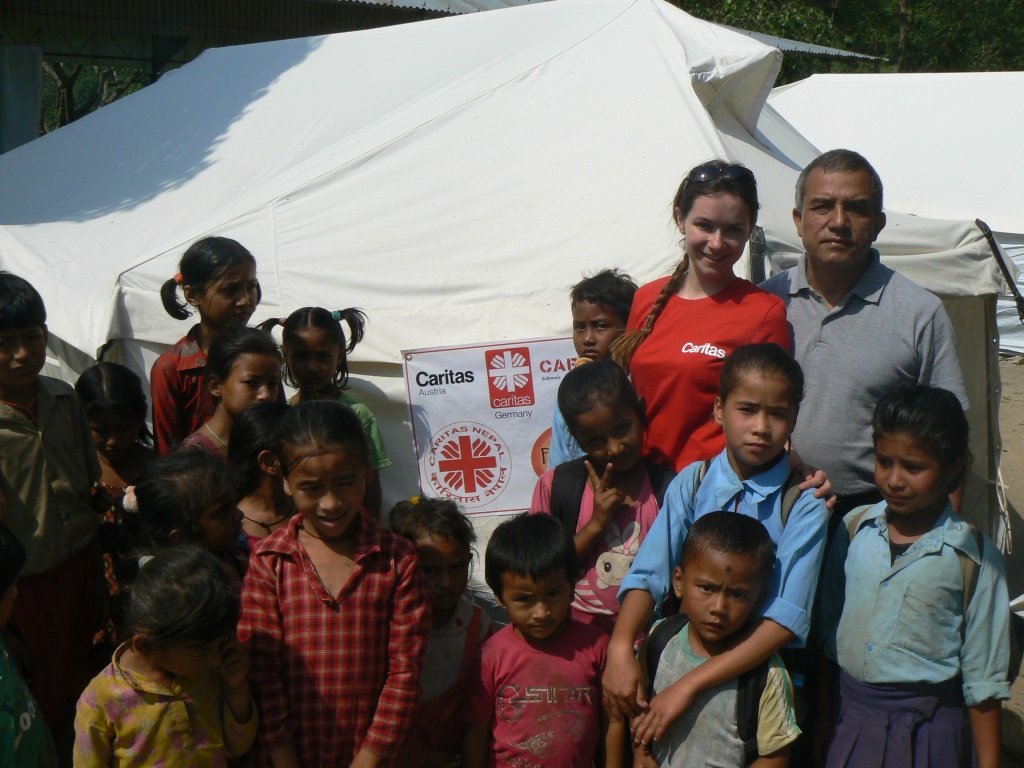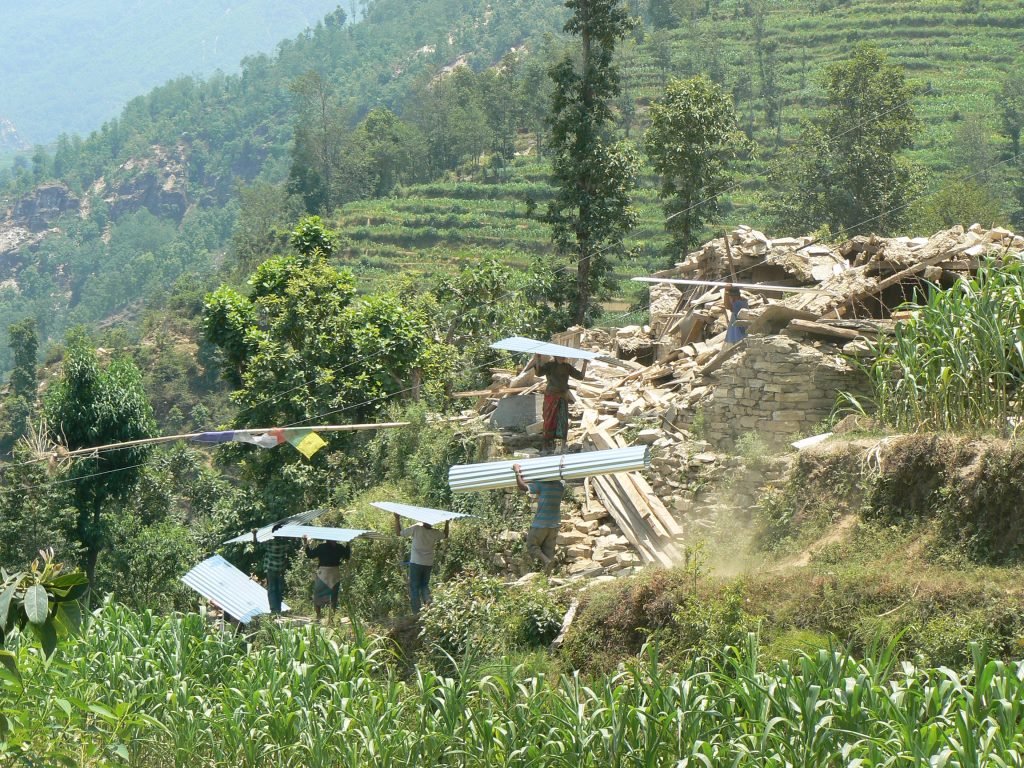By Martina Maetzl | Project Coordinator Nepal
Devastating Earthquakes
The two devastating earthquakes that struck Nepal on 25 April 2015 (magnitude 7.8 on Richter scale) and on 12 May 2015 (magnitude 7.3 on Richter scale), as well as a series of strong aftershocks continuing for over a month have caused severe damage and human loss. It is estimated that the lives of about eight million people, almost one third of Nepal’s population, have been impacted. Overall, 8.898 people have been confirmed dead, 22.309 have been injured.
31 of the country’s 75 districts have been affected out of which 14 were severely hit. District Sindhupalchowk, in which Caritas Austria is implementing a majority of its earthquake-related projects, is considered as one of the most severely hit districts.
Help of Caritas Austria
Caritas Austria has been working in Nepal over the past ten years with a wide range of partners mainly focusing on development cooperation and more specifically on projects for rural development (food security and agriculture) and for children. Since the earthquake Caritas Austria has significantly scaled up its response in Nepal, building on partnerships with Caritas Nepal, PHASE Nepal, RRN (Rural Reconstruction Nepal), Mary Ward School and CRS (Catholic Relief Services).
43.000 people supported
During the first emergency relief phase – the first weeks and months after the earthquakes - Caritas Austria reached and supported 43.000 people with food, shelter materials, hygiene kits and medicines. Thanks to temporary school tents, 5,700 children were able to pursue their education in a secure environment.
The reconstruction of the compound wall of the Mary Ward School (a partner Caritas Austria has supported for many years) was an important contribution to the safety and security of the 375 children.
Winter proof houses
In light of the approaching winter, Caritas Austria and its partners are planning to support 1,200 families living in mountain villages of the Sinhupalchowk district with further shelter materials to help them deal with harsh winter conditions (such as corrugated iron sheets, blankets, tarpaulins, insulating materials and solar lamps.) Further, the aim is to train them into making their homes winter proof.
Strong involvement of the local population
For the current reconstruction phase Caritas Austria emphasises on shelter projects and the strengthening of livelihoods. The focus lies on the reconstruction of the destroyed houses as well as school buildings. This will be done through a strong involvement of the local population: they will receive trainings in earthquake-resistant construction techniques and will be given the opportunity to participate in cash-for-work programmes.
By Stefan Gormasz | Caritas Austria Communication
Project reports on GlobalGiving are posted directly to globalgiving.org by Project Leaders as they are completed, generally every 3-4 months. To protect the integrity of these documents, GlobalGiving does not alter them; therefore you may find some language or formatting issues.
If you donate to this project or have donated to this project, you can receive an email when this project posts a report. You can also subscribe for reports without donating.

